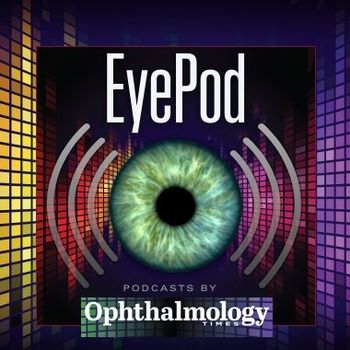
- Ophthalmology Times: May 2023
- Volume 48
- Issue 5
Game changer: Genetic testing shifts paradigm in assessing corneal dystrophies
Clinical judgment is not always sufficient to determine whether a patient has an inherited corneal disorder.
Reviewed by Anthony J. Aldave, MD
Clinical judgment is not always sufficient to determine whether a patient has an inherited corneal disorder, according to Anthony J. Aldave, MD, professor of ophthalmology and chief of the Cornea and Uveitis Division at UCLA Stein Eye Institute.
Speaking at the annual Walter Wright Symposium in Toronto, Canada, Aldave urged fellow ophthalmologists to perform genetic testing rather than rely exclusively on examination and imaging findings. Although most corneal dystrophies are autosomal dominant, some are autosomal recessive or X-linked, he explained, and different dystrophies are caused by mutations in different genes.
“Typically, dystrophic opacities are bilateral, symmetric and axially distributed and involve a single layer of the cornea,” Aldave said. “They are non-pigmented and progressive…[and therefore] fairly easy to diagnose without genetic testing.” But it isn’t always that simple.
“Neither a positive family history nor characteristic clinical features are always reliable means of differentiating between inherited and noninherited disorders,” he noted. “Molecular genetic analysis is the only definitive means of making this distinction.”
Aldave discussed the case of a 55-year-old female patient who was referred to a corneal specialist in October 2020 for evaluation of a 2-month history of decreasing vision. She had no history of recurrent corneal erosions but had undergone LASIK. Her family history was negative for corneal opacities or transplantation, and her visual acuity was 20/60 in both eyes.
“Both corneas demonstrated gray linear opacities in a reticular pattern involving the mid stroma, but sparing the periphery,” consistent with lattice corneal dystrophy, he observed, which can be exacerbated by LASIK surgery.
However, lattice corneal dystrophy was excluded as a cause after genetic testing failed to reveal the conserved mutation associated with this dystrophy. A patient like this should be sent to an oncologist or hematologist for further evaluation, he added. In this case, serum protein electrophoresis demonstrated a monoclonal paraprotein spike, confirming the diagnosis of paraproteinemic keratopathy mimicking lattice corneal dystrophy.
“Clinical findings are fundamentally insufficient to consistently make an accurate diagnosis because corneal opacities that appear dystrophic may actually be degenerative, posttraumatic, or paraneoplastic,” he stressed, and clinical features that appear degenerative may be dystrophic. Thus, genetic analysis is the most reliable way to differentiate between the two.
In addition, a negative family history does not exclude a dominantly inherited corneal dystrophy, given that corneal dystrophies have been associated with spontaneous mutations, he said, and there can be significant interfamilial and intrafamilial phenotypic variability in individuals who share a common mutation.
“If you rely on the phenotype, you will be confused when you see cases like this with 2 siblings who share a common mutation but demonstrate very different phenotypes,” he added.
Something else to keep in mind is that unilateral involvement does not exclude a corneal dystrophy. Aldave described several published cases of mutations in the TGFBI gene associated with a unilateral, late-onset variant of lattice corneal dystrophy. These cases also highlight the utility of molecular genetic analysis in differentiating nondystrophic conditions from dystrophies associated with an atypical phenotype.
Clinicians interested in performing genetic tests on patients can find a list of Clinical Laboratory Improvement Amendments-certified laboratories on the National Institutes of Health
Genetic testing, however, may not be as useful for keratoconus as for corneal dystrophies. “We are not there yet for keratoconus,” he concluded, “a complex disease with genetic and environmental factors…[that] investigators are still…elucidating.”
Anthony J. Aldave, MD
E: [email protected]
P: 310-206-7202
Aldave is a consultant for Avellino.
Articles in this issue
over 2 years ago
Building a successful cross-linking practiceover 2 years ago
Teprotumumab: First FDA-approved treatment for TEDover 2 years ago
Preservative-free latanoprost vs BAK-preserved latanoprostover 2 years ago
Peptide therapeutics are being introduced into ophthalmologyover 2 years ago
Understanding options for combination myopia managementover 2 years ago
Expert sheds light on treating EBMD and recurrent erosionsover 2 years ago
Lessons from the Togo Glaucoma Projectover 2 years ago
New approach to foveal holes: Light, sound, and nutraceuticalsover 2 years ago
How decreased cone densities may help detect and monitor MSNewsletter
Don’t miss out—get Ophthalmology Times updates on the latest clinical advancements and expert interviews, straight to your inbox.













































